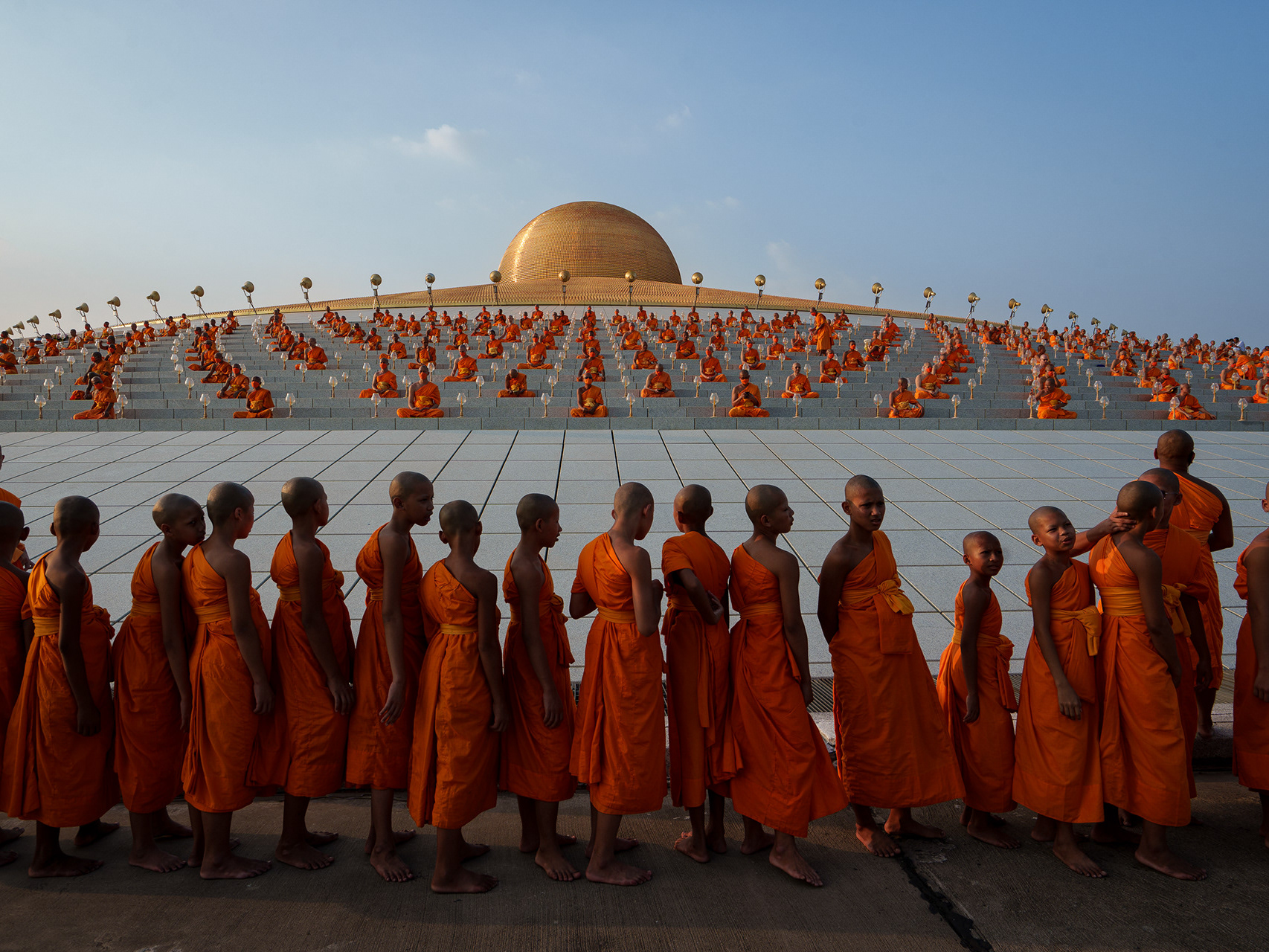
Makha Bucha Day
The Wat Phra Dhammakaya temple, located on the northern outskirts of Bangkok, immediately strikes for its large golden dome that represents a rising sun but looks more like a modern flying saucer. The Makha Bucha is one of the most important Buddhist festivals and celebrates the event in which the Buddha, when enlightened, begins to preach and pronounce his laws. Here these celebrations are of great charm and spectacularly scenic. The temple represents the modern face of Thai Buddhism, it is followed by millions of faithful but also very contested because of the large donations it receives. It consists of 150 modern buildings, can accommodate 10,000 monks and the open-air area below can collect 600,000 faithful strictly dressed in white to contribute to the scenography and staging of religious services. During the celebrations the monks sit neatly with a glass boule next to them with a lit candle, the maniacal order of the ranks, the strictly marked places for the faithful make up a spectacular choreography more like a military parade than a religious feast. The Dhammakaya sect perfectly embodies today's society, modern marketing methods are used for promotion and the faithful pray for career success and for the prosperity of their family.
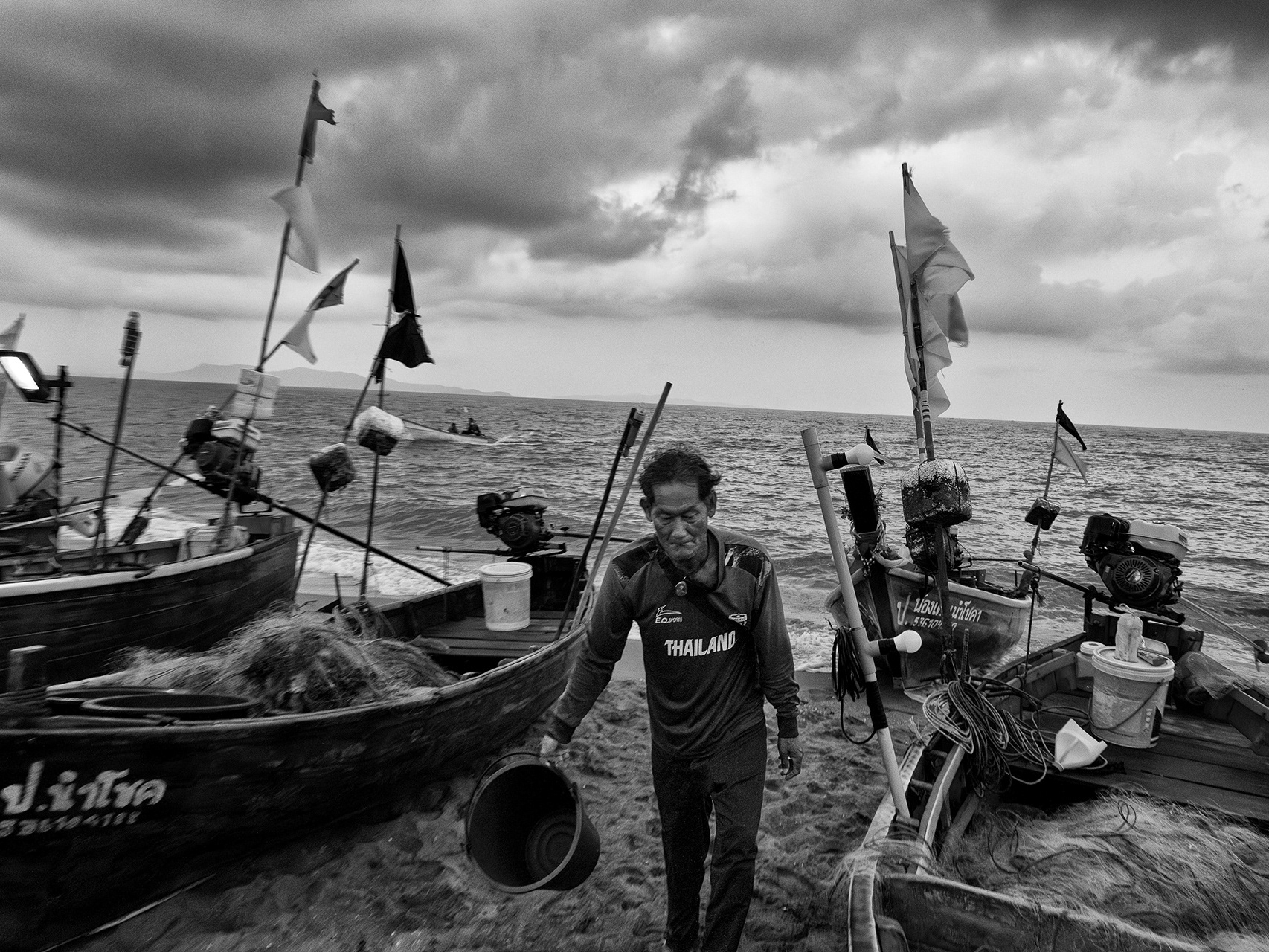
THAI Fishermen
The Thai Government has already introduced a series of fisheries reforms since 2015 in response
to the European Union's threats to ban the import of fish from the country. The multi-billion-dollar fishing industry in Thailand had been put under scrutiny after investigations that showed widespread enslavement of fishermen, trafficking in human lives, violence on fishing vessels and in onshore processing plants. The fishermen are mostly foreigners, many of whom come from Myanmar and many live in stateless. Although the reforms have improved working conditions and the situation remains monitored by the government, the closure of fisheries from February to May has brought a severe economic crisis in this category creating an even deeper bag of poverty for these workers. At this time, the fish lay their eggs and the blockade facilitates the restocking of the sea, which is severely compromised by the over-exploitation of intensive fishing. It is certainly not easy to reconcile the needs of fishermen and the sustainability and health of the sea and at the moment it does not find a single solution that can meet the needs of
both fronts.

The Food of the Future
Can insects become an alternative food source globally?
Beyond personal sensitivities, even in Europe with the recent regulations on the possibility of selling flours from crickets, one wonders about the value of this alternative protein source in opposition to intensive farming and more environmentally sustainable thanks to the significantly lower consumption of water and electricity.
In the northeast of Thailand insects have been consumed for centuries, in recent years it has bet on this sector by proposing itself as a leading nation on the know-how of this supply chain with its 200,000 companies. Today the situation is very different, the farmers are tried by the post-Covid economic crisis, inflation and the disproportionate increase in the cost of feed also resulting from the war in Ukraine. Surely this is a viable path even if the resistance of the West is not easy to win for Thailand it remains a bet for the future.

Chinese Opera Troupe
This troupe has existed in Bangkok for about 100 years. The Chinese Opera in Thailand already existed at the end of the 1600s.The chinatown of Bangkok is the largest in the world. The wealthy businessmen of Bangkok's Chinatown pay to have performances inside Chinese temples as a thank you for the progress of business or to commemorate a deceased or an important event .The shows are repeated for several days so immediately next to the stage a camp is created where the actors and staff live and prepare for the show. The Chinese Opera troupe are itinerant, so the actors move with their families.
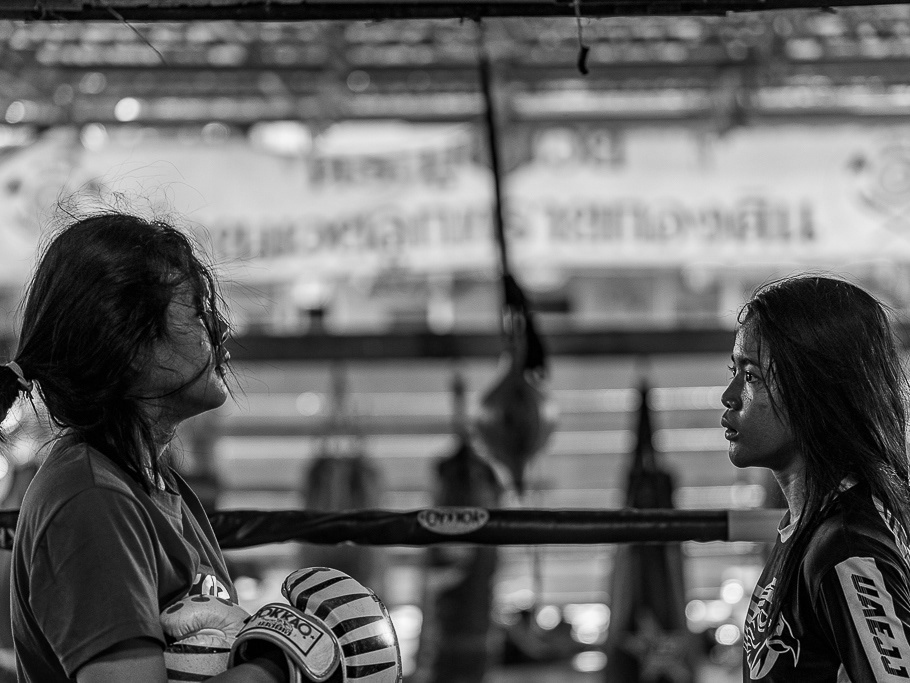
Muay Thai Family
The Muay Thai Looksaykongdin Gym training camp is located in the Min Buri district, north of Bangkok, one of the largest Muslim districts just outside the city. This is a difficult area, whit a few possibilities and without infrastructures . The peculiarity of this training camp is that the coach and owner, Mr. Noparit Yoohanngo is also the father of almost every athlete who trains here and each of them boasts champion titles. Noparit children and grandchildren grow up in the ring, for him the Box was just a vehicle thanks to which his children were able to study and stay away from drugs.
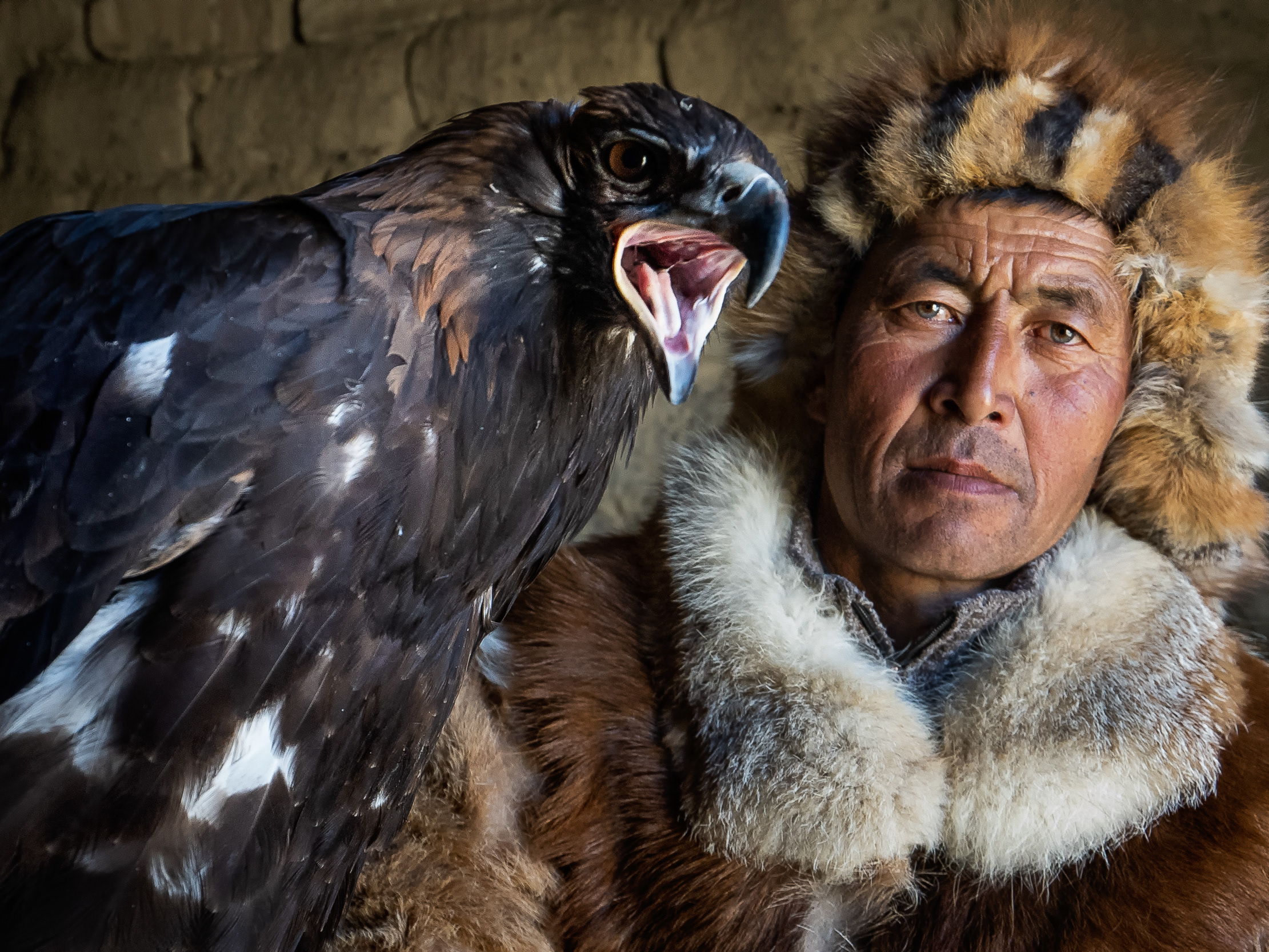
The Golden Eagle
The Olgii Eagle Festival was born in 1999 thanks to funding from an American tourism agency based in UB. The party helped give new life to the practice of eagle hunting, attracting an increasing number of tourists from around the world each year. For Mongolian Kazakhs, eagle hunting is a winter hobby not a profession, in fact they live on pastoralism and winter is the time when flocks require the least attention. Hunters, usually descended from Burkitshi families, hunt according to tradition releasing eagles after an appropriate period of time, 5-7 years or when the eagle reaches reproductive age. These photos were taken in 2019
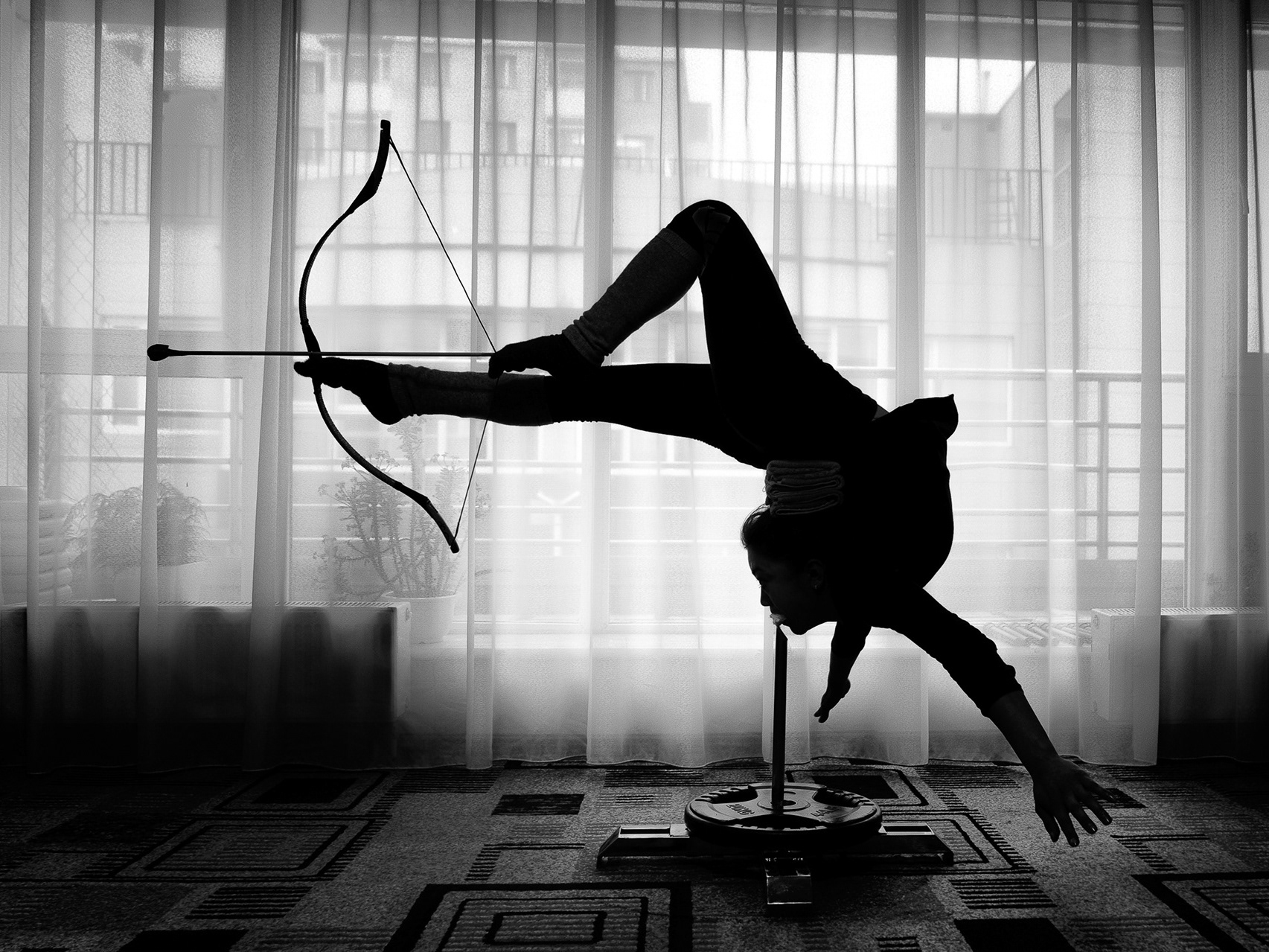
Mongolian Contortionism
During my travels I am always looking for those stories that best represent the local culture and tradition. Contortionism in Mongolia is a sport of ancient origins. During the communist regime, the Mongolian State Circus on tour became one of the few occasions of contact with the West and this discipline became famous all over the world. At the fall of communism, the Mongolian people acquire a new freedom, seeking their own traditions and contortionism and circus art find a wide following and amateur and professional contortion schools spread throughout the territory, especially in its capital Ulaanbataar. Many professional girls work in the world's largest and most famous circhs, the less fortunate ones entertaines spectators of cruise ships and night clubs around the world from Macau to Las Vegas. These photos were taken at several schools in Ulan Bator and Erdenet in October 2019.
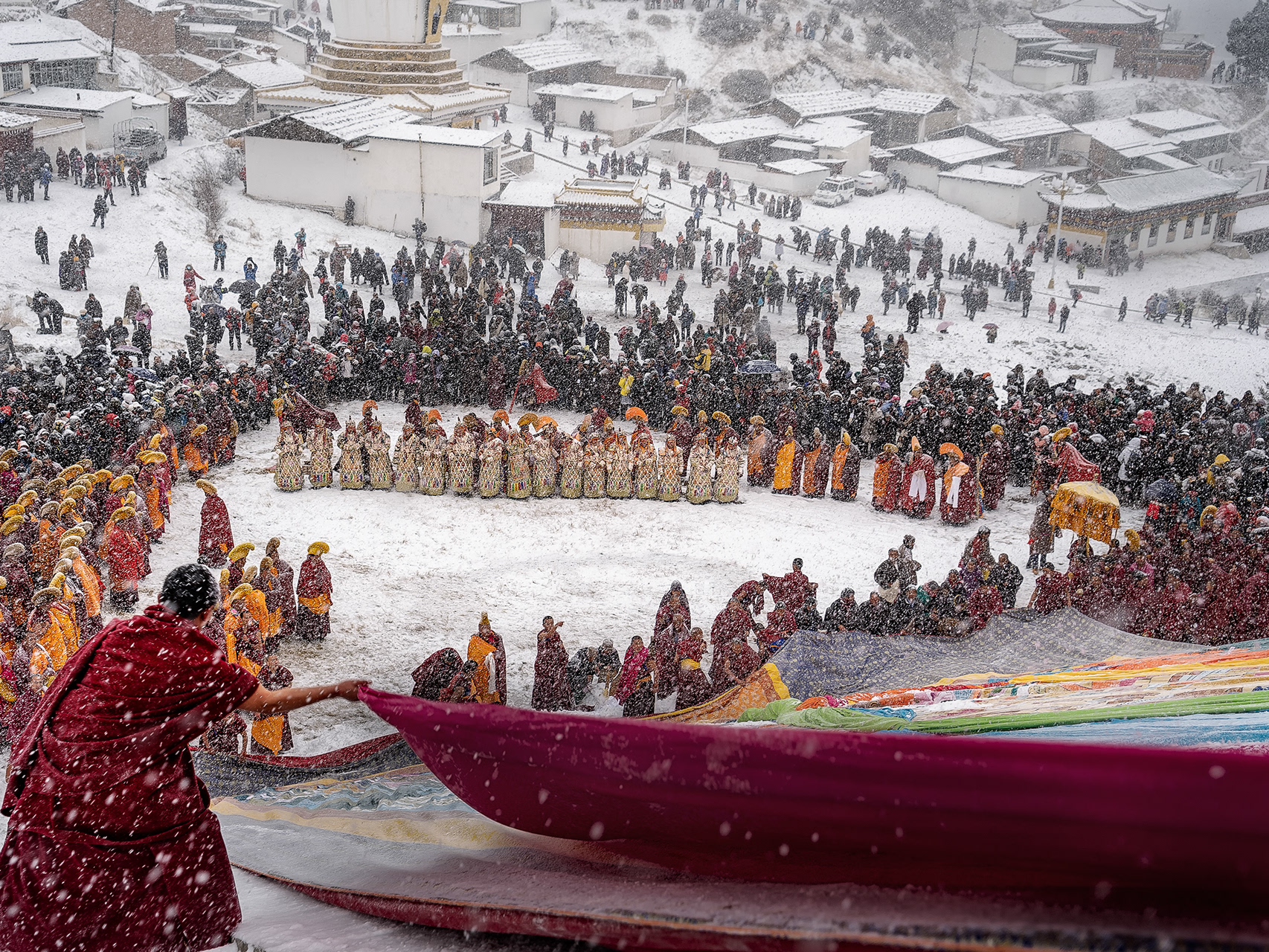
"Monlam" The Great Prayer"
II Monlam was established by Lama Tsongkapa in 1409, it is celebrated every year in many places in Tibet and is the most important religious holiday for its people. Monks and pilgrims pray for several days for a long life, for the growth of Dharma in minds and for world peace. During the festival in addition to the prayers there are ritual dances and huge processions The most important day is "The Revelation of the Buddha", monks and pilgrims carry a huge painting of the Buddha, the Thangkha, on the hill so that it can be shown thus creating the connection with the Buddha. These photos were taken at Labrang, Tongren and Langmu. The photo are taking before begin the pandemic in the 2018 and 2019
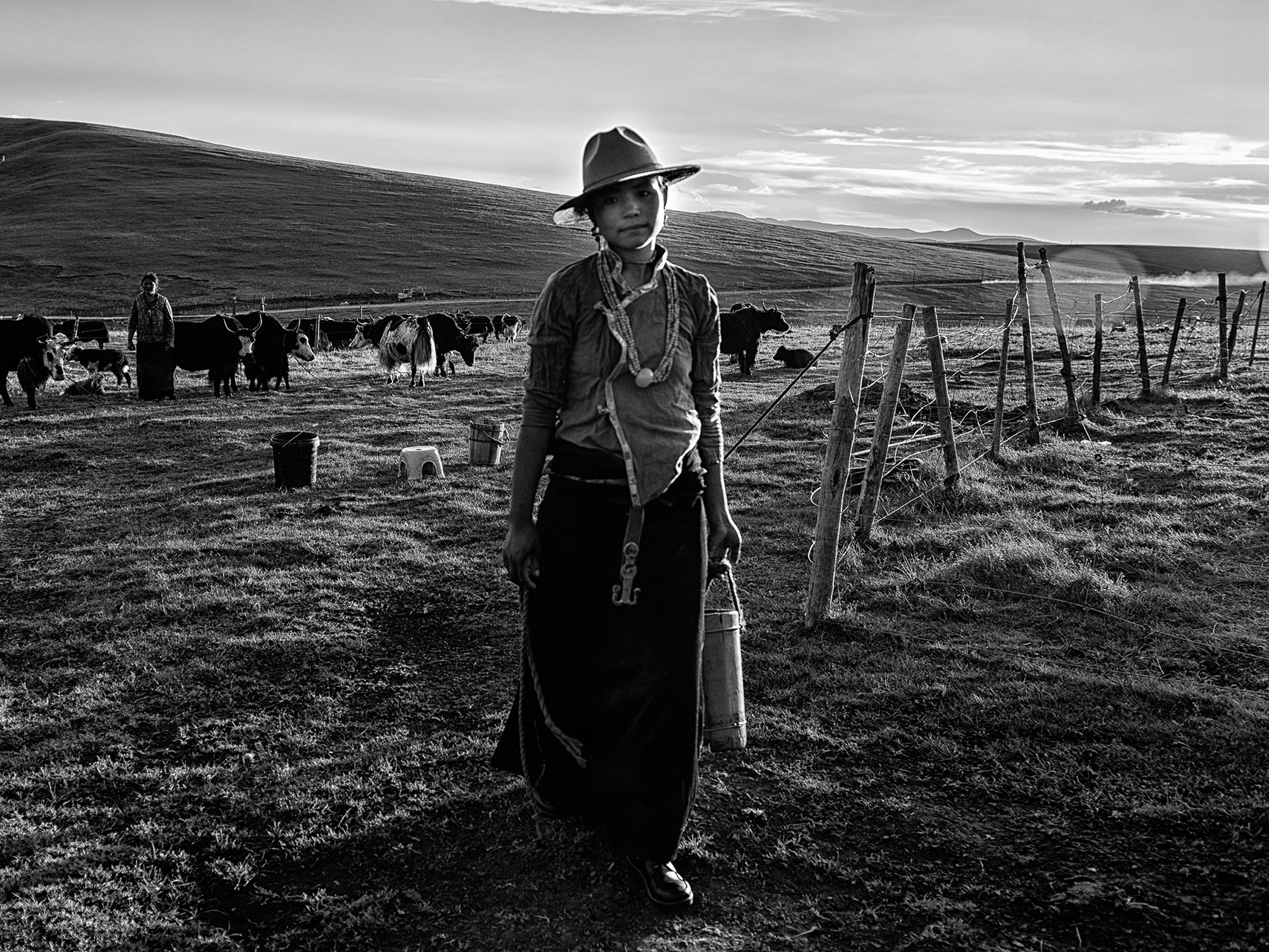
Black Yak Tents
Today the last nomads of Tibet are widespread in various Himalayan areas, in a vast territory that embraces the Tibet, some Chinese regions, Nepal, Bhutan and northern India. In the Tibetan language they are known by the name of ' Drokpa ', which can be translated as 'people of the high pastures'. It is estimated that there are about two million. In 2003 the Chinese government began a plan to expropriation of the land a free time for pastoralism and the construction of new villages to convince the nomads to leave their activity as breeders. The causes are unclear, certainly those areas have great natural resources. Only a few daredevils resist, but the current situation is greatly changing their lifestyle by making them increasingly sedentary.
Photos from 2017
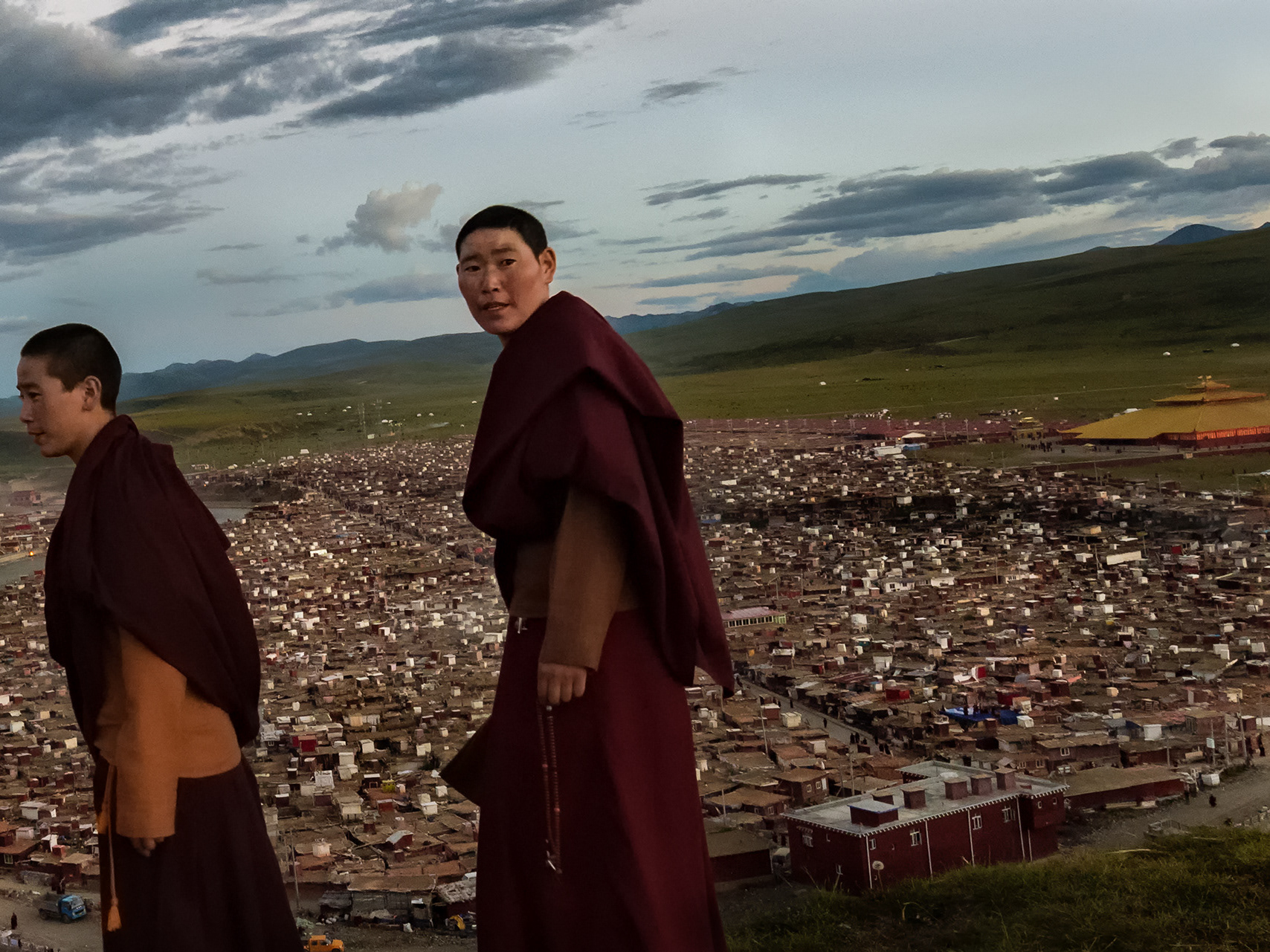
Yarchen Gar
Yarchen Gar is a female monastic school founded by Akhyuk Rimpoche in 1980. It is located in an isolated valley at 4000 metres above sea level in Kandze County. In the 90s it hosted about 7000 nuns. In 2001, the Chinese authorities, considering the excessively large camp problematic, ordered a first demolition. In 2019, about half of the complex will be dismantled and non-resident nuns will be evated in the region. The photos were taken in 2017 when the institute had 10,000 attendances.
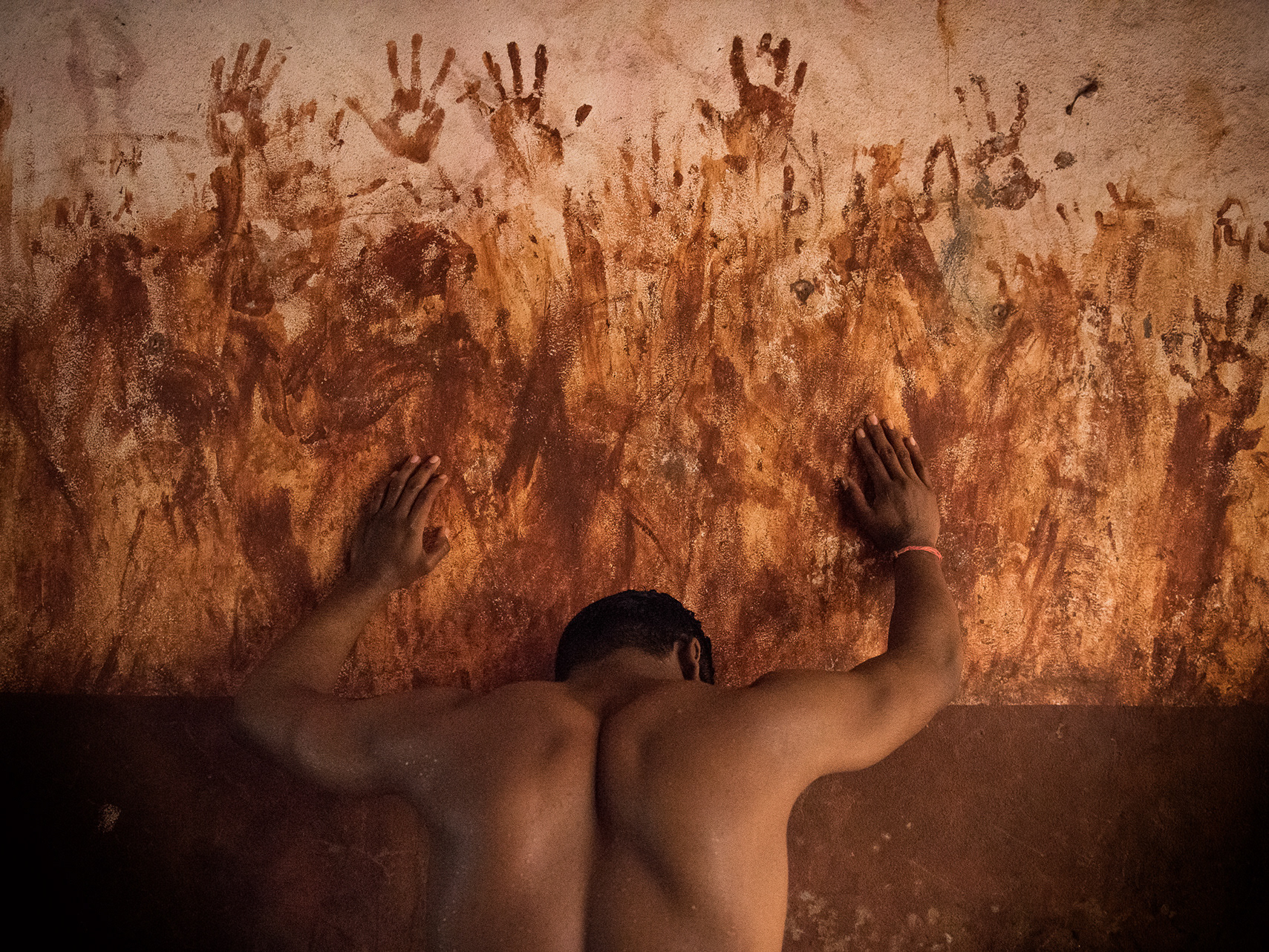
Kushti
This ancient discipline has a history of at least 5000 years, competitions organised for entertainment were popular among all social classes, with the participation of kings and other nobles. The wrestlers represented their kings in the challenges between rival kingdoms; the deadly challenges before the royal court served as a way to resolve disputes and avoid large-scale wars. Therefore, professional wrestlers have always been held in high esteem. Even today this fight is practised in the gyms-monastry called Akhara, devoted to the monkey god Hanuman, the protector of the wrestlers.Now most of the wrestlers come from the less wealthy social classes but many of them are also members of the army. The photos were taken in 2017 in the Kholapur and Mumbai district where this discipline is particularly engrained.
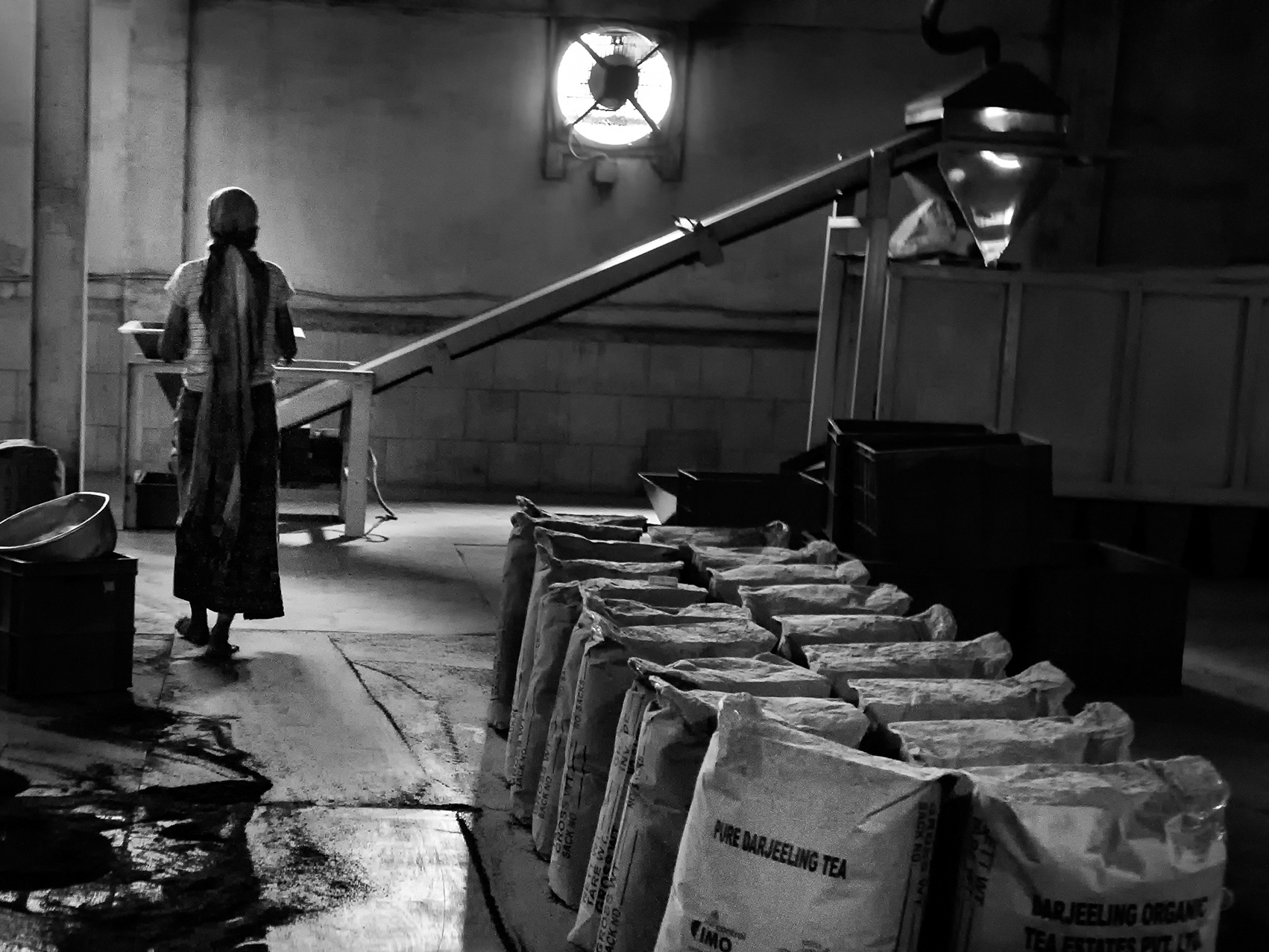
Darjeeling Tea 2011
Ambootia, is one of the best known tea areas of Darjeeling, It was among the first tea estates set up by British tea planters in 1850 and is the second largest tea producer in Darjeeling in India. The Darjeeling Tea Company of England founded the Ambootia Tea Garden in 1861 and was taken over by Indian entrepreneurs in 1954 after India achieved independence in 1947. Today The Ambootia Group – or Darjeeling Organic Tea Estates Private Ltd – has acquired 12 of the 87 Darjeeling plantations and has become internationally renowned for its high quality teas
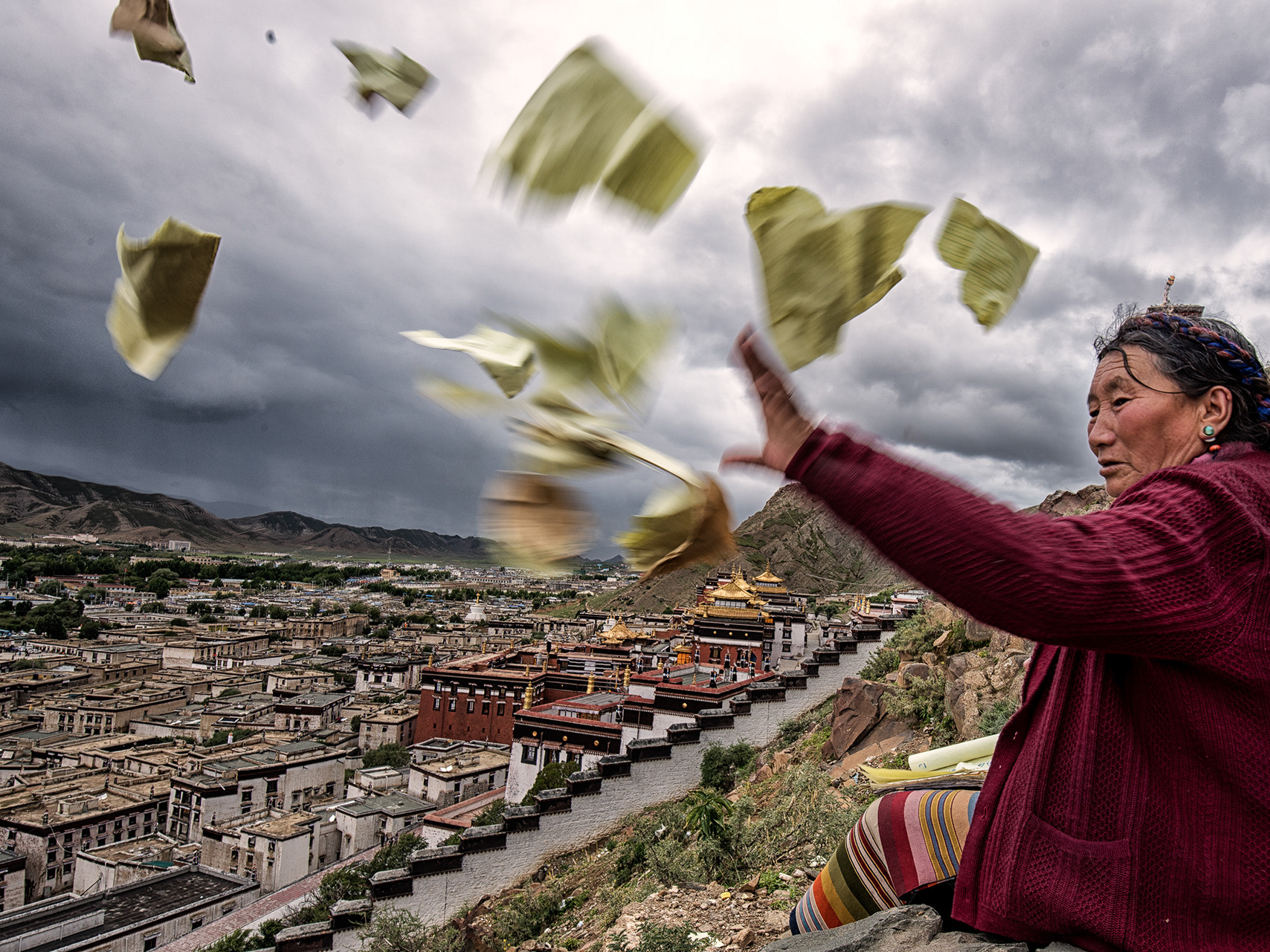
The faces of Buddha
I consider the faces of the Buddha a long-term journey to Mahayano Buddhism by investigating the connections between man, religion and ancient traditions. The photos were taken through the regions of Kham, Amdo and autonomous reason of Tibet with the intention of telling that sense of solidarity and wealth of soul of this people who have been able to bring back in the daily simplicity the teaching of their doctrine. I started this work during my first trip through Eastern Tibet in 2010